Welcome to “The Ultimate Guide to Outreach Link Building“! Link building is a crucial component of search engine optimization (SEO) and can help boost your website’s visibility, authority, and search engine rankings.
Outreach link building involves reaching out to other websites and requesting a link back to your site, and it can be an effective way to build high-quality backlinks that can improve your SEO efforts.
We’ll walk you through the process of outreach link building step-by-step, from identifying potential link opportunities to crafting outreach emails and measuring your success.
Let’s cover best practices, strategies, and tips to help you build a solid foundation for your outreach link-building campaign and achieve your SEO goals.
Whether a beginner or an experienced SEO professional, this guide will provide valuable insights and actionable tactics to take your link-building efforts to the next level.
So, let’s dive in!
What does the term “Link Building Outreach” mean?

Link-building outreach refers to the process of approaching bloggers and webmasters to obtain backlinks from their resources. This is typically achieved through cold emails and social media.
The method of link-building outreach involves four key steps, namely prospecting, preparing email sequences, acquiring contact information, and personalizing pitches. However, the outreach process continues after sending out emails.
While one-off collaborations may yield satisfactory results regarding replies and backlinks, the ultimate goal of link-building outreach is to establish enduring partnerships with other bloggers.
Later in the article, we will delve into the specifics of how to accomplish this. However, for the time being, let’s review the entire link-building outreach process in a step-by-step manner.
Link Prospecting
The initial phase of any outreach campaign, including link-building, involves identifying potential targets. There are several approaches to accomplishing this, such as conducting a manual search or contacting existing contacts. The duration of the prospecting stage in your outreach campaign is determined by your link-building tactics and prospecting method, ranging from just a few minutes to several hours.
There are four primary approaches to conducting prospecting for outreach campaigns. One of the most straightforward and effective methods is to reverse engineer competitors’ backlinks. Select a linkable asset topic and type based on your observation of other individuals achieving good outcomes with that subject.
If you have followed our guidance, you have also created an asset that outperforms theirs. This implies that you can use Ahrefs’ Site Explorer to view who has linked to their content and download the list. To go further, look for other assets on the same topic and repeat the procedure.

Ahrefs Content Explorer is the next prospecting tool. If stealing your competitors’ links was insufficient, you may use Ahrefs to locate prospects they have yet to reach. Ahrefs Content Explorer is similar to Google but tailored for SEOs.
They have a vast index of web pages, but unlike Google, they also provide access to a plethora of useful data and filters. Enter a keyword related to your linkable asset, and you’ll see a tremendous amount of relevant articles.
Let’s pretend our linkable asset is the “best front-end language”.
I’d search all pages that have “best front-end language” in the title and set some basic filters:
- The page must be in English
- One page per domain
- Live pages only
- Minimum Domain Rating of 27
In case you don’t have Ahrefs access or want to expand your list, you can search for “best front-end language” and browse the outcomes for additional resources.
For various sectors, you’ll encounter many listicle posts that can provide you with around 150-300 of the most outstanding blogs in your area after reviewing them.
A professional tip is to enter each of these blogs into Ahrefs Site Explorer and click on “Competing Domains” to uncover more related websites.

Within seconds, we can see more than 100 current articles in English with a decent Domain Rating. It is relatively simple to persuade someone discussing travel advice to append an extra paragraph at the end of their post, prompting readers to ensure they have everything before leaving for the airport. This is where your checklist can be helpful.
This is the easiest way to build links without resorting to purchasing them. If you intend to rely on this strategy for results, it would be useful to read some sales books and improve your skills in that area.
In case you don’t have Ahrefs access or want to expand your list, you can search for “best front-end language” and browse the outcomes for additional resources.
For various sectors, you’ll encounter many listicle posts that can provide you with around 150-300 of the most outstanding blogs in your area after reviewing them.
A professional tip is to enter each of these blogs into Ahrefs Site Explorer and click on “Competing Domains” to uncover more related websites.
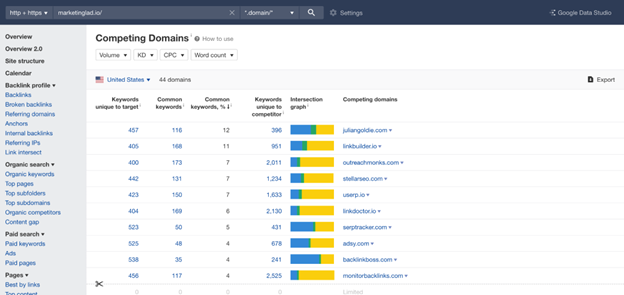
The process involves the creation of multiple new domains from one, which can be repeated many times. If Content Explorer is not helpful, Google’s advanced search operators can be used to make more specific queries. These operators can also make SEO easier and potentially increase one’s IQ by 5 points in a year.
Some examples of these operators include using quotes to search for exact matches, using “OR” to search for multiple keywords and using “title” to search for pages containing the query in the title. By combining these operators, it is possible to achieve impressive results.
a. Research & Prospect Preparation
Preparing for research and prospecting involves increasing the chances of receiving a response (and a link) from familiar people and websites. To establish a connection, it is crucial to demonstrate familiarity with the person or website.
This can be achieved by reading their most popular and recent articles, understanding their values and beliefs, and analyzing the type of content they typically share on social media.
Additionally, it is beneficial to take an interest in personal aspects such as their latest product, vacation, conference attendance, or tool recommendations. These personal touches can go a long way in building a relationship and increasing the likelihood of a positive response.
It is important to demonstrate care and familiarity with the person or business you are targeting. Another effective strategy is to make them aware of your name and company before starting the link-building campaign, especially for high-value prospects.
There are various creative ways to achieve this, such as sending a non-promotional email offering suggestions to improve their site. You can compliment an article, recommend a tool, or share interesting thoughts about the industry.
Engaging with their social media accounts by following them, leaving thoughtful comments, and liking and retweeting posts can also be effective. Subscribing to their email list and providing valuable responses to their questions or suggestions can also help build a relationship.
In some cases, it may be worth purchasing their products as a way to connect with them, even if it is a small item like a $9 eBook, as it demonstrates a genuine interest in their business.
Getting Ready For Your Email Sequence

To prepare for your link-building outreach campaign, the next step is to create an effective email sequence consisting of the initial pitch and one or two follow-ups.
Crafting a compelling subject line is crucial as it is the first thing the recipient sees and can influence their decision to open your email. A good subject line should be intriguing enough to pique their interest, but also transparent enough to convey the content of the email.
While there is no one-size-fits-all formula for subject lines, including the recipient’s name, business, or the title of their article can significantly improve your response rates. The key is to make the subject line about the recipient and personalize it to their specific interests and needs.
In the following sections, we will delve deeper into the different elements of an effective email sequence.
a. Initial Pitch
The next step in planning your outreach campaign is to create a sequence of emails, which includes the initial pitch and follow-ups. A good link pitch focuses on your prospect and presents an attractive value proposition.
The value proposition is critical in a link-building pitch because it gives prospects a reason to add your link. Our team likes to place the value proposition right at the beginning of the pitch to immediately inform prospects of the benefits for them.
To create effective link-building templates, put yourself in the shoes of your prospects and ask if your pitch would be appealing to you. If not, then it’s necessary to re-evaluate your email.
b. Follow-Up

Follow-up messages play a critical role in the success of an email campaign, as almost half of all replies are the result of follow-ups. However, it’s important to strike a balance and avoid being too aggressive or irritating.
The most common mistake made by link builders is sending too many follow-ups too frequently. A brief message such as “Just checking in to make sure my previous email wasn’t overlooked” is generally sufficient.
One effective approach for follow-ups is to create a sense of urgency. It’s not recommended to send more than one or two follow-ups, if you don’t get a response after three emails. Any additional follow-ups could result in being marked as spam. So make sure you make the best out of your strategies with follow-up tips from Clevenio.
Additionally, it’s important to respect the time of your prospects. Bloggers and content managers are often busy and have other priorities besides answering emails.
They may have read your email but postponed responding until after completing a more pressing task. As a result, it’s best to space your follow-ups out by at least three business days.
c. Email Signature
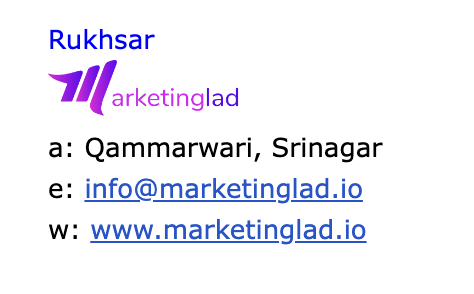
The use of an email signature may seem insignificant, however, it is crucial in presenting yourself to potential clients and earning their confidence.
A basic email signature should consist of your company logo or a personal photo, physical address, job title, and links to social media or phone number.
It’s important to note that sending spam messages without a proper email signature, including a profile picture, puts you in the same category as those link-builders who use unprofessional tactics. This can potentially harm your reputation and credibility with your prospects.
d. Configure your Email and Warm Up
To ensure your emails don’t get flagged or end up in spam folders, it’s crucial to configure your email warm-up properly. This involves implementing various technical measures that establish your domain’s trustworthiness and confirm the authenticity of your emails.
Some of these measures include setting up HTTPS on your domain, configuring DKIM and DMARC for email, and establishing SPF records. It’s also recommended to avoid using free email providers like Gmail or Outlook, as they are often associated with spam.
Instead, use your domain and verify your outreach list with a service to avoid bounced emails and spam traps.
When starting with email outreach, it’s important, to begin with, a small number of highly personalized, high-value prospects. Then gradually scale up over time once your domain has gained trust.
Additionally, incorporating a reliable email verifier tool into your outreach strategy can significantly enhance your email deliverability by ensuring the accuracy and validity of your contact list, reducing the risk of encountering bounce rates, and enhancing the overall success of your email campaigns.
Personalization
In Step 3, which is Personalization, all the variables added in Step 2 (Create a Sequence) will be customized automatically. However, simply stating the prospect’s name and organization is insufficient. To make the email sound personal and genuine, you should also refer to something specific that the prospect mentioned in their content.
This demonstrates that you have read and understood their blog post, rather than simply sending a generic link-building pitch. Nonetheless, coming up with unique points to include in each of your link pitches can be time-consuming.
To add a personal touch to your link pitches, you can also incorporate images that indicate where you want the prospect to include your link. This approach cannot be automated, indicating that a real person dedicated time to preparing the link pitch. This can significantly increase your response rates.
Creating Partnerships

Creating partnerships is essential for effective link building, regardless of the size of your potential prospects pool.
Whether you have a few hundred or tens of thousands of prospects, it is crucial to establish long-term collaborations rather than one-time link-building partnerships. This section will cover the methods you can use to achieve this goal.
It may seem like common sense, but the optimal time to initiate an email conversation is immediately after receiving a response to your initial pitch.
We suggest accessing your link-building email account on your mobile device and enabling notifications to ensure that you can respond promptly and capture leads while they are still interested.
a. Reply As Soon As You Can
It may seem like common sense, but the optimal time to initiate an email conversation is immediately after receiving a response to your initial pitch. We suggest accessing your link-building email account on your mobile device and enabling notifications to ensure that you can respond promptly and capture leads while they are still interested.
b. Offer A Guest Post
One straightforward technique for generating topics that are likely to be accepted by website owners is through the use of Ahrefs’ Content Gap function. This feature examines the website of your prospective link-building partner (and their competitors) to discover keyword gaps.
- If you provide a topic that assists them in closing the keyword gap, they are more likely to accept it. This is not only due to the topic’s usefulness, but also because you have taken the time to research their website. Here’s how to do it:
- Open two tabs in Ahrefs and insert your prospect’s website URL into Ahrefs Site Explorer.
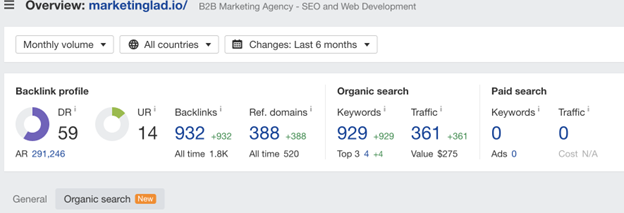
- In the first tab, switch to Organic Search and scroll to the Top 10 Competitors section. In the second tab, navigate to Content Gap.
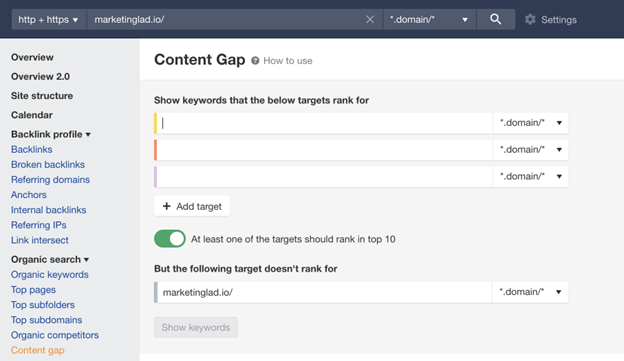
- Select two competitors from the first tab and insert their URLs into the content gap. Click “Show keywords.”
- In the Intersect filter, choose “2 targets” and click Apply. This will provide you with a list of keywords that your prospect’s competitors are ranking for, but they are not.
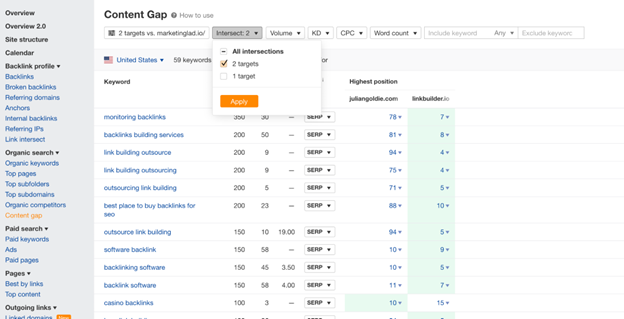
- Choose a few of these keywords and brainstorm guest post topics. When pitching these topics, mention how you discovered them through Ahrefs and include a screenshot to demonstrate that you have researched on their behalf.
Link Building Outreach Tools
When it comes to selecting software for digital marketing purposes, many experts enjoy conducting product evaluations and pitting various tools against each other. However, I’m not one of those individuals.
In reality, most outreach and sales tools are capable of completing the job effectively. Therefore, you should pick the software that aligns with your preferences, and budget and contains all of the essential features you require. As someone who has tried out several tools, I have found some to be satisfactory, which I will list below.
a. Ninja Outreach
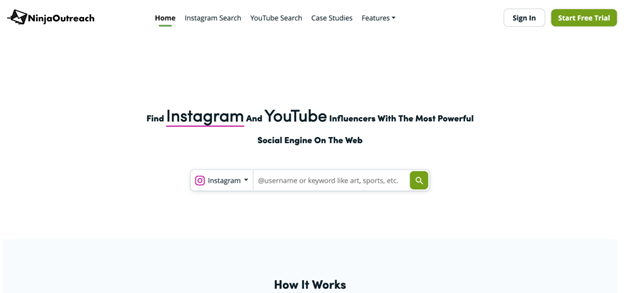
NinjaOutreach is a comprehensive customer relationship management tool that caters to the requirements of digital marketers and small enterprises.
It facilitates searching for influencers and emails across various platforms such as blogs, YouTube, and Instagram and includes filters that enable identifying the most suitable leads.
This software also allows users to discover the email and social media accounts of prospects, use email templates to reach out to them and track and analyze outcomes.
Additionally, by utilizing the Chrome extension, users can effortlessly add websites and identify contact information while searching for leads.
b. BuzzStream
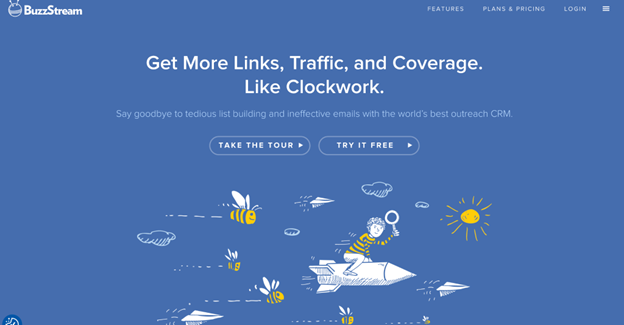
BuzzStream is a PR management software that simplifies the process of outreach and link building. With its Discovery feature, users can obtain the names and contact details of influencers by conducting keyword searches.
The tool is said to provide a range of features, including backlink management, campaign management, contact management, email distribution, link analytics, rank tracking, and social media monitoring.
c. BuzzSumo
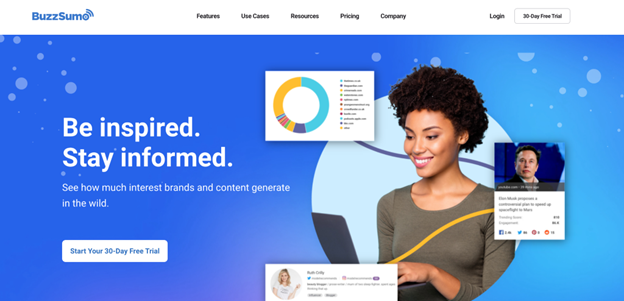
BuzzSumo is a valuable tool for pinpointing current content opportunities and outreach for backlinking purposes. The company also provides a free Google Chrome extension.
BuzzSumo lists a range of features, including audience segmentation, competitive analysis, configurable alerts, a customer engagement dashboard, impact scoring, influencer tracking, reputation management, and trend tracking.
By utilizing the tool, users can identify bloggers, influencers, and journalists who share their competitors’ content and capitalize on trends to broaden backlinking outreach opportunities.
Furthermore, the Brands Mention feature allows users to identify instances where their brand is mentioned without a backlink and send a request email for an addition.
d. Pitchbox
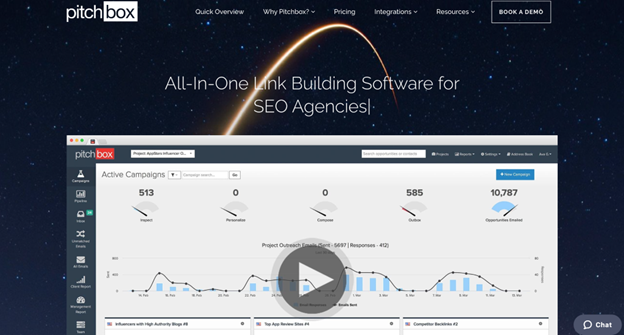
Pitchbox is a software solution that aims to assist SEO agencies, in-house marketing teams, and brands in finding influencers and constructing links. The software integrates seamlessly with SEO providers and generates pipeline reports for every phase of outreach.
Users are quite content with the customer support provided, and the dashboard is user-friendly. While Pitchbox may be somewhat more expensive than competitors such as Ninja Outreach and BuzzStream. The reviews suggest that users are satisfied with the additional features and are willing to pay the extra cost.
Conclusion
Outreach link-building is an essential component of any successful digital marketing strategy, and this guide has provided a comprehensive overview of the process.
By following the steps outlined in this guide, marketers can effectively identify target audiences, and select appropriate outreach tools.
While the process may seem daunting, with the right approach and tools, outreach link-building can yield significant results in terms of brand exposure, website traffic, and ultimately revenue.




